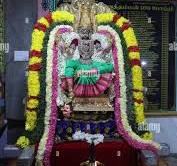Fasting Practices across Religions: A Comparative Exploration
Religious fasting, Comparative exploration, Spiritual traditions, Health benefits of fasting, Intermittent fasting, Extended fasting, Jain fasting, Christian Lent, Hindu Ekadashi, Buddhist fasting, Taoist fasting, Jewish fasting, Paryushana, Navaratri
Introduction
Fasting is a universal practice that transcends religious and cultural boundaries. From spiritual purification to physical health benefits, fasting holds a significant place in various faiths and communities. In this article, we’ll delve into the diverse fasting traditions, highlighting key differences from the well-known Ramadan rituals. Whether you’re curious about Jain fasting or intrigued by Buddhist practices, we’ve got you covered.
1 . Christianity: Lent and Beyond
- Lent: 40 days of fasting and reflection leading up to Easter.
- Intermittent Fasting: Some Christians practice intermittent fasting as part of their spiritual discipline.
2 . Lent is a significant religious observance in Christianity. Here are the key details:
- Duration: Lent lasts for 40 days, excluding Sundays, and begins on Ash Wednesday.
- Purpose: It is a time of spiritual preparation, reflection, and penance leading up to Easter (the celebration of Jesus Christ’s resurrection).

- Fasting and Abstinence: During Lent, Christians often fast or abstain from certain foods or activities. The focus is on self-denial, seeking forgiveness, and drawing closer to God.
- Symbolism: The 40 days symbolize Jesus’ 40 days of fasting in the wilderness before starting his public ministry.
- Traditions: Some common practices during Lent include:
- Fasting: Restricting food intake, especially on Ash Wednesday and Good Friday.
- Prayer: Increased prayer and meditation.
- Almsgiving: Acts of charity and helping others.
- Repentance: Reflecting on one’s sins and seeking forgiveness.
In summary, Lent is a solemn period of introspection, discipline, and spiritual growth as Christians prepare their hearts for the joyous celebration of Easter.
3 . Buddhism: The Middle Path of Moderation
- Theravada Buddhism: Monks and nuns follow strict fasting rules.

- Mahayana Buddhism: Emphasizes moderation rather than extreme fasting.
In Theravada Buddhism, monastics adhere to specific fasting rules as part of their spiritual practice. Here are the key points:
- Eating After Noon: Traditionally, Buddhist monastics follow the prātimokṣa rules outlined in various Vinayas (texts that define monastic discipline). These rules specify that monastics must not eat after the noon meal1. This practice is not considered extreme fasting but rather a moderate way of eating that aids meditation and health.
- Purpose: The period after the noon meal is meant for meditation or sutta chanting. Breaking this rule is considered a pācittika offense, which requires confession1.
- Lay Practitioners: Devout lay Buddhists also follow this rule as one of the Eight Precepts during important religious observances (uposatha)1.
In summary, Theravada Buddhist monastics prioritize moderation in food consumption, emphasizing mindfulness and self-discipline. Unlike extreme fasting, their practice aims to support both spiritual growth and physical well-being.
4 . Judaism: Yom Kippur and Tisha B’Av
-

Fasting Practices Across Religions Yom Kippur: A 25-hour fast, focusing on repentance and forgiveness.
- Tisha B’Av: Commemorates historical tragedies with a full-day fast
5 . Hinduism: Ekadashi and Navaratri
- Ekadashi: Bi-monthly fasting days dedicated to Lord Vishnu.
- Navaratri: Nine nights of fasting during the festival honoring Goddess Durga.
Navaratri: Nine Nights of Fasting Honoring Goddess

Durga
- What is Navaratri? Navaratri means nine nights. During this period, devotees across India worship the Mother Goddess (Shakti or Devi) in her various forms.
- Chaitra Navaratri (March-April) and Sharad Navaratri (October-November) are the major Navaratri celebrations.
- Fasting Rules for Navaratri:
- Dos:
- Consume fruits, nuts, dairy products, and recommended foods.
- Prepare food in desi ghee (clarified butter) and peanut oil.
- Maintain celibacy during fasting.
- Observe gentle yoga poses, stretches, twists, and bends to complement the fasting process.
- Don’ts:
- Avoid non-vegetarian food, onion, garlic, and certain grains.
- Refrain from shaving, or cutting hair, and nails during Navaratri.
- Engage in positive prayers and sincere devotion for well-being.
- Dos:
Ekadashi: Bi-monthly fasting Days Dedicated to Lord Vishnu
- What is Ekadashi? Ekadashi refers to the 11th day after both the full moon and the new moon. The human physiology undergoes a cycle called a mandala approximately every 40 to 48 days. During this cycle, there are three specific days when the body does not demand food. Recognizing these days and not eating when the body isn’t asking can significantly impact health.
- Importance of Ekadashi Fasting:
- On Ekadashi, the planet itself is in a certain state, making it conducive to inner awareness and spiritual practices.
- Fasting on Ekadashi keeps the body light and available, allowing our awareness to turn inward.
- It provides an opportunity to open the door within and deepen our connection with the divine.
- Preparing for Ekadashi Fasting:
- Fasting should always be supported by the right kind of spiritual practices or sadhana.
- Proper preparation of the body, mind, and energy is essential for beneficial fasting.
- Forceful denial of food is not the goal; instead, it’s about making the process conscious.
- When to Break the Ekadashi Fast:
- After fasting from dinner on the previous day, the next meal is dinner on Ekadashi itself.
- Taoism: Aligning with Nature
- Taoist Fasting: Aligning with natural cycles and cosmic energies.
6 . Taoist Fasting is a practice deeply rooted in Taoism, emphasizing alignment with natural cycles and cosmic energies. Let’s explore its key aspects:
Bigu (Avoiding Grains):
- Some early Taoist diets called for bigu, which translates to “avoiding grains.”
- The belief was that by abstaining from grains, one could achieve immortality.
- Ancient Taoist texts, such as the Taiping Jing, suggest that individuals who attain a state of complete ziran (naturalness) would not need food at all. Instead, they could sustain themselves by absorbing cosmic qi1.
- Vegetarianism:
- Taoist religious orders often promote a vegetarian diet to minimize harm to other sentient life.
- However, the level of dietary restriction varies within Taoism.
- Contemporary Taoism:
- According to some versions of the Taoist diet:
- Bigu (grain avoidance) and veganism are practiced.
- Certain strong-smelling plants like asafoetida, shallot, and mountain leek are avoided.
In summary, Taoist fasting goes beyond physical nourishment—it aims to harmonize with the natural order, enhance spiritual awareness, and cultivate vitality
7 . Jainism: Austerities and Paryushana
- Paryushana: An eight-day fasting period for self-purification.
- Austerities: Jains practice extreme fasting to shed karma.

Paryushana: An eight-day fasting period for self-purification.
Paryushana Parv: The Festival of Self-Reflection
- Paryushana Parva, often referred to simply as Paryushana, is one of the most important festivals in Jainism.
- It typically spans eight to ten days, with variations between the Shvetambara and Digambara sects of Jainism.
- Falling during the monsoon season, Paryushana is a time when ascetics and laypeople unite to intensify their spiritual pursuits.
- Self-Reflection and Repentance:
- At the heart of Paryushana is the practice of self-reflection and repentance.
- Jains use this period to review their actions, seek forgiveness for any harm caused to living beings, and resolve to lead a more virtuous life.
- This process of introspection is known as Pratikramana.
- During Pratikramana, Jains recite sacred texts and seek forgiveness from Tirthankaras (spiritual teachers) and other sentient beings.
- Fasting and Austerity:
- Fasting is a prominent feature of Paryushana.
- Devotees undertake various fasting levels, with some abstaining from food entirely while others limit their diet.
- Fasting serves as both a physical and spiritual detoxification. It allows practitioners to break the attachment cycle to worldly pleasures and symbolizes empathy for those who go hungry daily.
- Scripture Recitation and Discourses:
- Throughout Paryushana, scriptures like the Kalpa Sutra and Samaysara are recited, and discourses on Jain philosophy are conducted.
- These sessions deepen practitioners’ understanding of the faith and provide spiritual guidance.
- Digambaras and Shvetambaras: Different Paths, Shared Goals:
- Jainism has two main sects: the Digambaras and the Shvetambaras.
- While their practices during Paryushana share common elements, there are notable differences.
Austerities in Jainism
- Jain austerities are practices undertaken to control desires, shed karma, and improve self-control.
- Proşadhopavāsa:
- This refers to fasting on the eighth and fourteenth days of the lunar cycle.
- It is considered a compulsory practice for Jain saints when they have committed an error in relation to the preachings of Mahavira.
- During Proşadhopavāsa, the person fasting discards bodily adornments spends time in sacred places, and contemplates pure thoughts by listening to scripture.
- Anasan (Fasting):
- Jains perform various types of austerities during Paryushan and other occasions.
- Anasan involves complete avoidance of food or eating only a partial meal.
- It is a way to break attachments and purify both the body and soul.
- Jain austerities emphasize inner transformation and the pursuit of liberation (moksha).
In summary, Paryushana and austerities play a crucial role in Jain’s spiritual practice, fostering self-awareness, compassion, and detachment from material desires. 🙏🌿
8 . Comparative Insights: How Different Fasting Practices Impact Health
- Intermittent Fasting: Benefits for weight management and metabolic health.
- Extended Fasting: Potential risks and benefits.
9 . Intermittent Fasting (IF)
- Definition: Intermittent fasting involves cycling between periods of eating and fasting.
- Benefits:
- Weight Management: IF can aid in weight loss by creating a calorie deficit during fasting periods.
- Metabolic Health: It may improve insulin sensitivity, reduce inflammation, and enhance fat metabolism.
- Cellular Autophagy: Fasting triggers autophagy, a process that removes damaged cells and promotes cellular repair.
- Simplicity: IF is relatively easy to follow and adaptable to various lifestyles.
- Popular Methods:
- 16/8 Method: 16 hours of fasting followed by an 8-hour eating window.
- 5:2 Diet: Eating normally for 5 days and restricting calories to 500-600 on 2 non-consecutive days.
- Eat-Stop-Eat: 24-hour fasting once or twice a week.
- Cautions:
- Individual Variability: Effects vary among individuals.
- Nutrient Intake: Ensure balanced nutrition during eating windows.
- Potential Overeating: Some may compensate by overeating during eating periods.
10 . Extended Fasting
- Definition: Extended fasting refers to prolonged periods without food (typically beyond 48 hours).
- Potential Benefits:
- Autophagy: Enhanced cellular repair and regeneration.
- Insulin Sensitivity: Improved insulin response.
- Weight Loss: Depletion of glycogen stores and fat utilization.
- Mental Clarity: Some report increased focus during extended fasts.
- Potential Risks:
- Electrolyte Imbalance: Prolonged fasting may lead to electrolyte disturbances.
- Muscle Loss: Extended fasts can break down muscle tissue.
- Hunger and Fatigue: Longer fasts may cause discomfort.
- Individual Tolerance: Not suitable for everyone.
- Guidance:
- Hydration: Stay well-hydrated.
- Supervision: Consult a healthcare professional for extended fasts.
- Breaking the Fast: Gradually reintroduce food to avoid digestive issues.
Remember, fasting practices should align with individual health goals, lifestyle, and overall well-being. Always seek professional advice before embarking on any fasting regimen. 🌿🕊️
Explore the diverse world of fasting practices across religions in our comprehensive guide.
Remember, fasting isn’t just about abstaining from food—it’s a journey of self-discovery, discipline, and connection to the divine. So, whether you’re fasting during Ramadan or exploring other traditions, embrace the transformative power of this ancient practice.
Read more about fasting practices and their impact on health in our comprehensive guide. 1
1: Fasting Trends and Health Impact
Explore the diverse world of fasting practices across religions in our comprehensive guide. 1
Explore the diverse world of fasting practices across religions in our comprehensive
Explore the diverse world of fasting practices across religions in our comprehensive guide. 12


